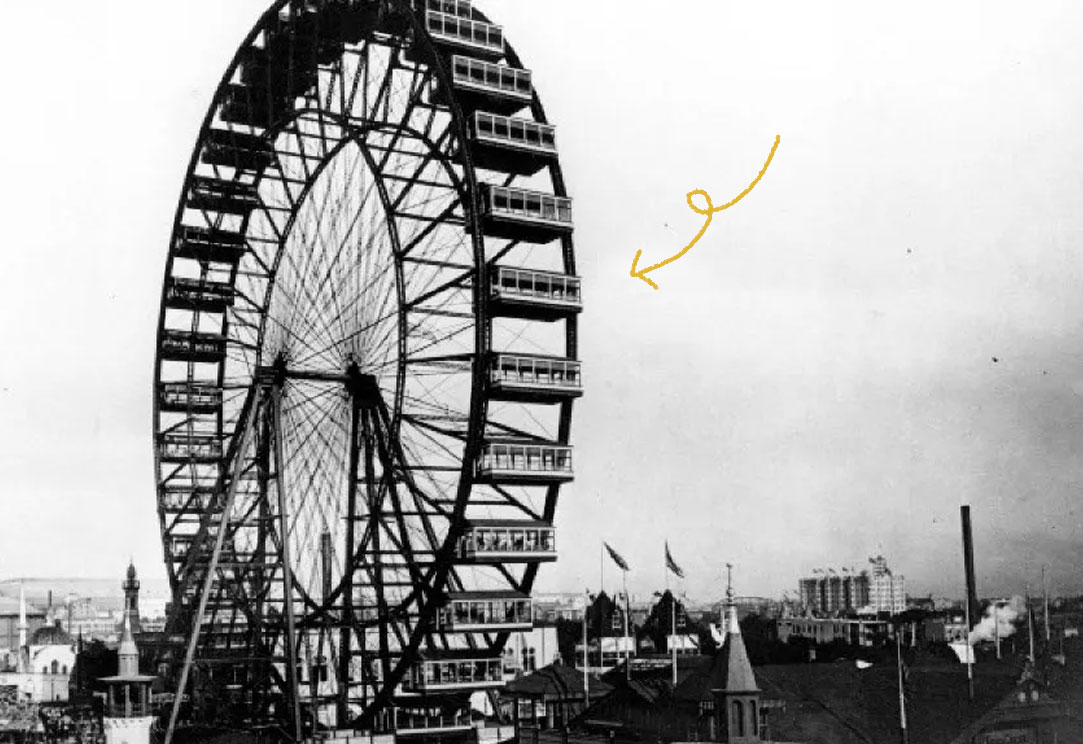In 1890, architect Daniel Burnham was in charge of planning the World’s Columbian Exposition in Chicago. He directed his team of designers to come up with an idea that would be spectacular enough to rival the recently built Eiffel Tower. George Washington Gale Ferris Jr., a 33-year-old engineer from Pittsburgh whose company was inspecting the steel used at the fairgrounds, came up with the idea of a huge revolving steel wheel. He pitched the idea to Burnham, who thought it seemed too fragile. But Ferris believed in his vision and spent $25,000 of his own money to conduct safety studies and hire more engineers; he also recruited investors. (It's worth noting that it wasn't the first idea for a wheel — similar concepts had been dreamed up before, including the patented wooden “roundabouts” (50-foot wooden wheels) that carpenter William Somers was building at Asbury Park, Atlantic City, and Coney Island. But Ferris' concept was certainly unique and the most ambitious.) On December 16, 1892, Ferris efforts paid off and he got the green light to build his wheel. Ferris’ creation measured 250 feet in diameter, featured a 89,320-pound axle that had to be hoisted onto two towers that each stood 140 feet in the air, and was fitted with 36 cars capable of carrying 60 people each. It was also adorned with over 3,000 lights. On June 21, 1893, Ferris’ wheel launched and was a massive success. Over 19 weeks, over 1.4 million people paid 50 cents to ride the Ferris Wheel for 20 minutes. Few riders had ever had such an impressive aerial view. However, when the fair closed, Ferris became embroiled in lawsuits about debts he owed to suppliers and money that the fair owed him. In 1896, he passed away at a young age, bankrupt and suffering from typhoid fever. His wheel was purchased by a wrecking company, who then sold it to the 1904 Louisiana Purchase Exposition in St. Louis. Two years after that, the world’s only official Ferris Wheel was dynamited into scrap. Since then, there have been many imitations of Ferris’ creation, which we now refer to as Ferris wheels. Over time, they became extremely popular all over the world and today, Ferris wheels are a nearly ubiquitous presence at summertime fairs and amusement parks, where they continue to awe riders with the impressive vistas they provide.

Your go-to guide for weird history facts
Subscribe to the FREE daily email that makes learning about history fun.


